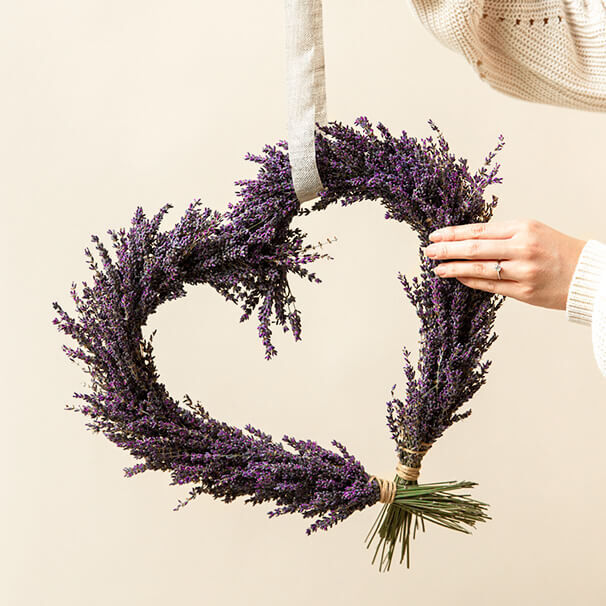Lavender

Lavender: How it smells! How it glows in the sun! From the beginning of July, when the French Provence shines in the most beautiful purple of the lavender blossom, the time of enjoyment begins: the beguiling and sweet scent that now hangs over the land not only caresses the nose, but also the nerves - because the aroma of lavender has an incredibly calming and relaxing effect.
The people of southern France make use of the wonderfully fragrant flowers of their national symbol in a variety of ways: tourists can not only buy sachets of dried lavender in numerous stores, but also lavender honey, lavender teas, a range of lavender sweets as well as all kinds of cosmetics and soaps. The valuable effects of the plant have been known for many centuries. Even the Romans extracted essential bath oils from the flowers. The name probably also dates back to this time: "lavandula" means - translated from Latin - "that which is used for washing".
Purple flair for the home garden
To this day, lavender is one of the most valuable medicinal plants of all. It is not only used for nerve therapy and high blood pressure, but also for sleep disorders, cramps, stomach and circulatory weakness, asthma and heart complaints. In some hospitals, a bouquet of dried lavender is even hung in the delivery room so that it can develop its calming effect - often together with jasmine, sandalwood, rose and ylang-ylang.
But you don't have to travel to Provence to enjoy the scent and healing powers of lavender. You can also enjoy this enchanting plant at home without much effort, whether it is the true lavender (Lavandula angustifolia) or one of the cultivated forms (e.g. Lavandula latifolia Lavandula stoechas). With good care and an ideal location, the semi-shrub can live for up to 20 years. Vary the colors when planting! There are varieties in the classic dark purple, but also those with a blue tinge or in dark blue, and some produce a light purple, pink or white flower.
A pasture for bumblebees and butterflies
In keeping with its origins, lavender naturally prefers very warm and sunny conditions. Due to its short stature, the labiate plant is also well suited for the balcony or as a container plant. It looks beautiful in combination with roses - and has a double benefit: On the one hand, it attracts beneficial insects such as bumblebees, butterflies and bees, and on the other, it keeps pests such as ants, aphids and carrot flies away from flower beds. The structure of the soil is particularly important to lavender. It should be low in nutrients, light and dry and, above all, water-permeable. Ideally, therefore, add some sand or fine gravel to the soil; lime is also good for lavender. It only needs a little water. So only water it regularly when you have just planted the plant. After that, moist soil and waterlogging should be avoided at all costs. Fertilizing once in spring, for example with horn shavings, is completely sufficient.
Important for long-lasting splendor: pruning
When the flowers have dried out in late summer, it is worth pruning the plant. A determined shortening of the plant ensures that the lavender can sprout well again year after year. To do this, apply the shears where the plant is already slightly woody. Depending on its growth, you can easily shorten the shrub by two thirds. Make sure that the lavender in your garden is hardy! You can add brushwood to protect it from the cold. The frost-sensitive varieties, on the other hand, should be placed in a pot in a dry, bright and not too warm room.
Experience the impressive lavender blossom
If you want to see the full splendor of the impressive southern French lavender fields, we recommend a trip in July or early August when the plants are in full bloom - for example to the Provence-Alpes-Côte d'Azur region between Mont Ventoux and the municipality of Sault in the Vaucluse department. At harvest time in August, the French celebrate their "blue gold" with cheerful festivals - in many places, harvest celebrations are traditionally held.














